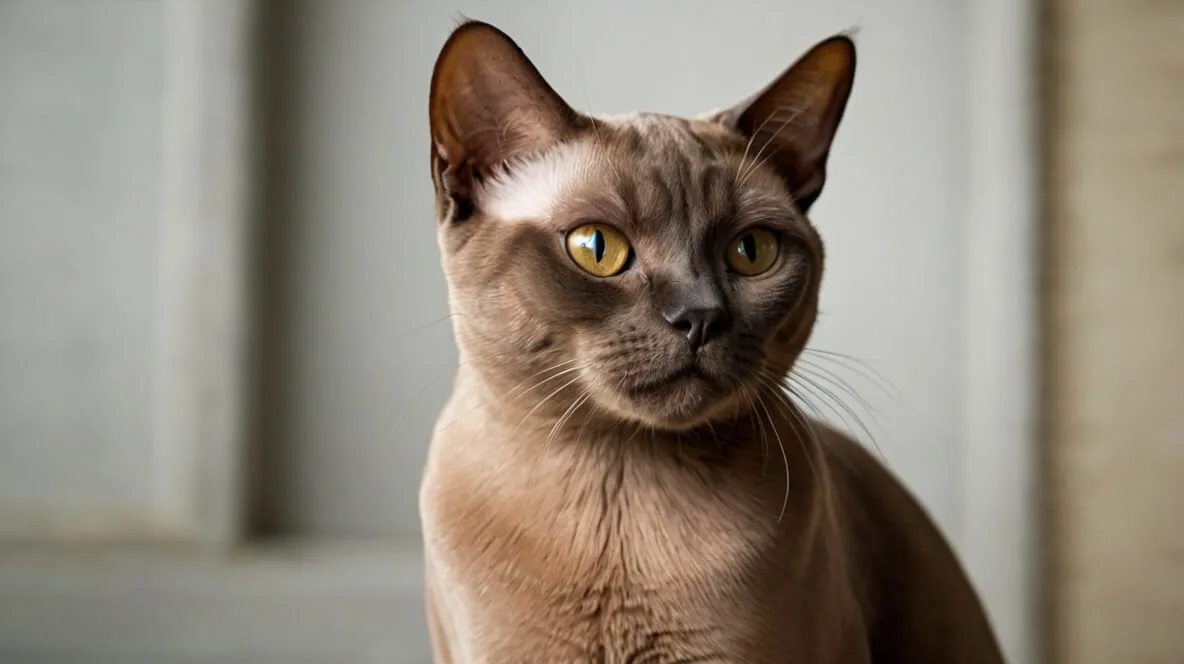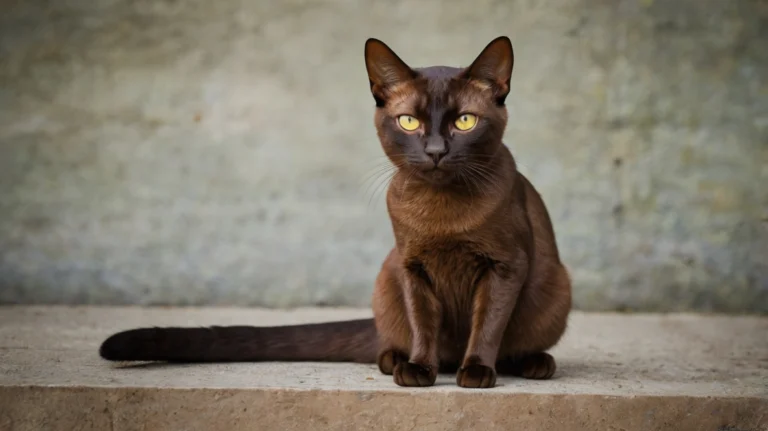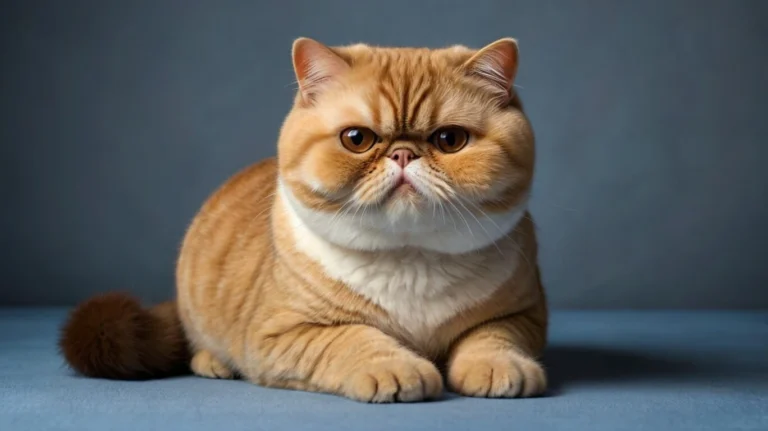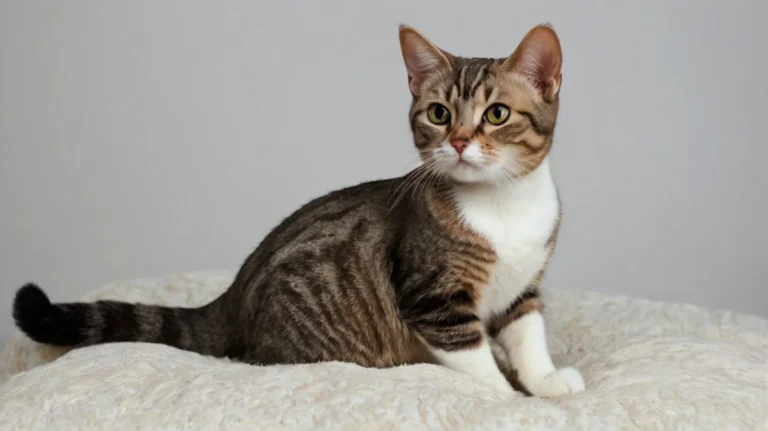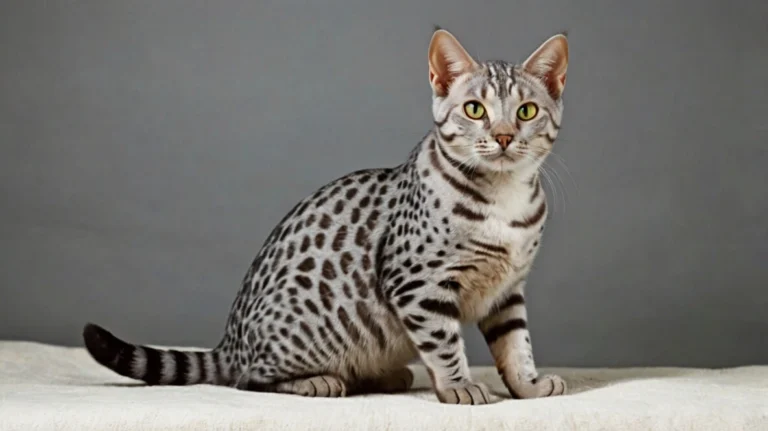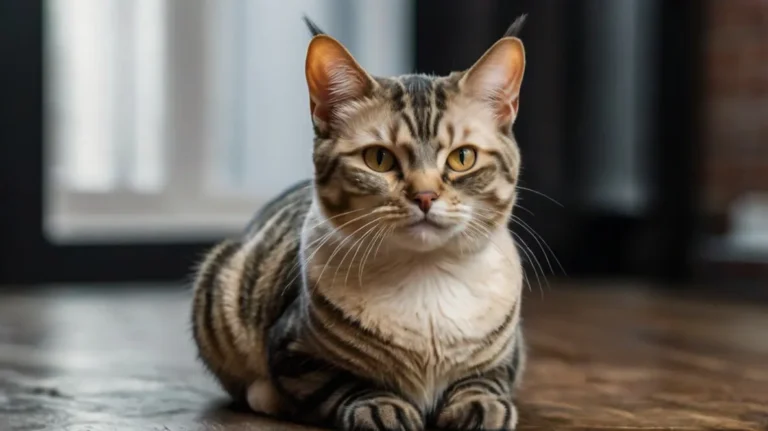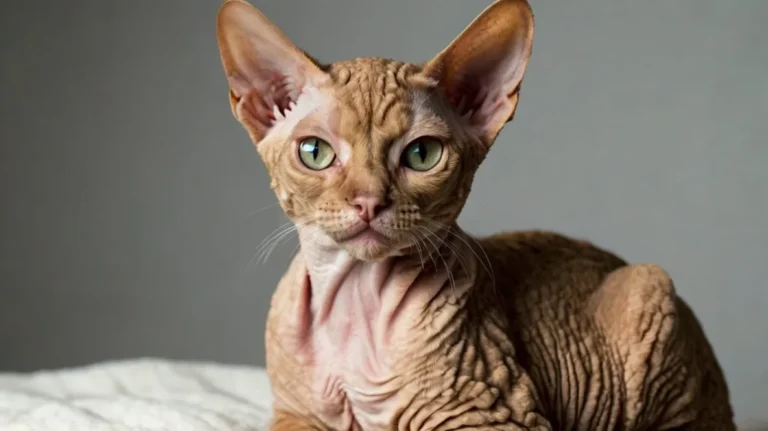The Burmese cat : caracteristics, Personality and History
Introduction
With their satin-smooth coats, liquid gold eyes, and athletic yet cuddly physique, Burmese cats embody feline perfection. These “velvet panthers” originated in Southeast Asia but have stolen hearts globally with their unusual devotion – displaying more puppy-like loyalty than typical cat aloofness.
Burmese cats captivate owners by blending two seemingly opposite qualities:
- Playful entertainers who keep you laughing with their antics
- Affectionate companions who crave constant closeness
- Vocal communicators with a surprisingly sweet meow
- Intelligent problem-solvers capable of learning tricks
History & Origin of the Burmese Cat
The modern Burmese traces its roots to 1930s America, though its ancestors hail from Burma (Myanmar).
- First imported to the U.S. in 1930 (a cat named Wong Mau)
- Developed through selective breeding with Siamese cats
- Recognized by CFA in 1936
- Two main types: American (stockier) and British (more slender)
Physical Characteristics of the Burmese Cat
Burmese cats present a deceivingly sturdy package – their medium-sized frames carry remarkable muscular density, creating that characteristic ‘brick wrapped in silk’ feel when lifted.
Key Features:
- Coat: Short, satin-like, and glossy (colors: sable, champagne, blue, platinum)
- Eyes: Large, expressive, and golden yellow
- Body: Rounded and muscular with surprising weight (“brick wrapped in silk”)
- Face: Sweet expression with rounded contours
- Weight: 8–12 lbs (females slightly smaller)
Personality & Temperament
Burmese cats are highly social, intelligent, and people-focused, thriving on interaction.
Key Personality Traits:
- Extremely Affectionate – Forms deep bonds and loves cuddling
- Playful & Energetic – Maintains kitten-like energy into adulthood
- Vocal & Communicative – Uses soft, sweet meows to “talk”
- Dog-Like – Follows owners, learns tricks, and plays fetch
- Exceptionally patient with children and accepting of other pets, Burmese cats thrive in bustling family environments where they can be involved in all household activities.
Burmese Cat Care & Health
Grooming Needs:
- Weekly brushing (minimal shedding)
- Regular nail trims (they love to knead)
Diet & Nutrition:
- High-protein diet to support muscle tone
- Portion control (prone to obesity)
Common Health Issues:
- Hypokalemia (low potassium)
- Feline Orofacial Pain Syndrome (FOPS)
- Average lifespan: 10–16 years
For more information on different feline varieties, explore our complete guide to All About Cat Breeds
Is a Burmese Cat Right for You?
✅ Best For:
- Families wanting an interactive, loving cat
- Owners who enjoy vocal, attention-seeking pets
- Households with time for play and companionship
❌ Not Ideal For:
- Those who prefer independent cats
- Quiet households (they dislike being alone)
Where to Adopt or Buy
- Reputable Breeders: CFA/TICA listings
- Burmese Rescues: Specialized organizations exist
- Price Range: 800–800–2,500
Final Thoughts
The Burmese cat is a loving, lively, and loyal companion, perfect for those who want an engaging feline friend. Their glossy coats, golden eyes, and affectionate nature make them irresistible pets.
Considering a Burmese? Be prepared for constant companionship and playful antics!
Helpful Resources:
- Official Breed Standard
Cat Fanciers’ Association (CFA) – Burmese Breed Profile
The definitive breed standard from one of the world’s largest cat registries - Health & Genetic Information
UC Davis Veterinary Genetics Laboratory – Burmese Health
Genetic health testing recommendations from a leading veterinary institution

